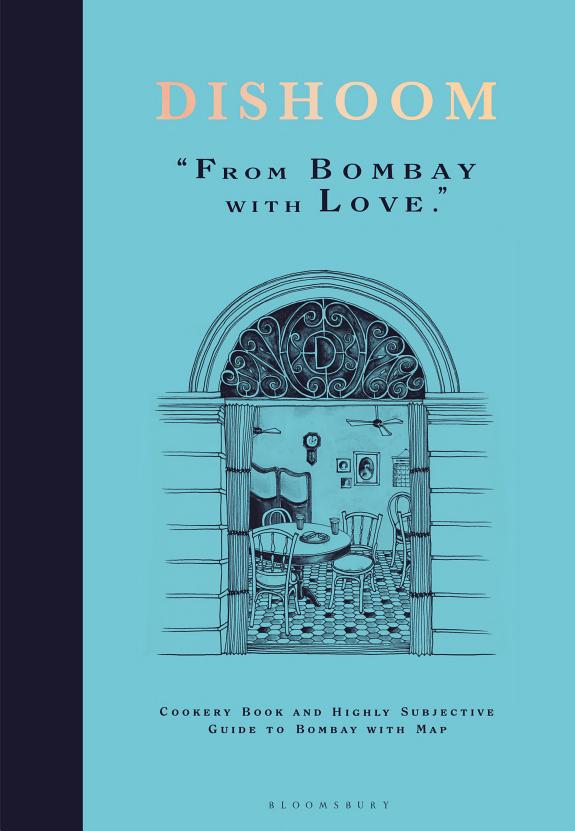
Armchair travel around the world!
Start your reading adventures with our FREE Reading Atlas.

- Around the World in 14 Books
- 7 Thrilling Book Series
- 6 Audiobooks That Are Like Theater For Your Ears



This travelogue cookbook (400 pages) was published in December of 2019 by Bloomsbury Publishing. The book takes you to old Bombay. Melissa read Dishoom and loved it; it wouldn't be on our site if she didn't recommend it.
Bookshop.org is an online bookstore with a mission to financially support independent bookstores and give back to the book community.

This is a cookbook like no other: a travel guide to modern Mumbai and a romantic travelogue of old Bombay — with recipes.
You could literally go to Mumbai with this book in your hands and use it as a guide to eat in some of the best restaurants, admire Art Deco architecture, visit iconic gardens from Bombay’s golden era, and wander the Ballard Estate, a.k.a., London of Mumbai.
When the British took control of the city in the 17th century, they called it Bombay. Today, the port city on India’s west coast is known as Mumbai and is the capital of the state of Maharashtra.
It’s famous for Bollywood, street food, and architecture, including landmarks like the Gateway of India — an Islamic-style arch that sits on the waterfront, overlooking the Arabian Sea — and a train station built in the spiky, ornate Italian-Gothic style in 1887.
In its glory days, Bombay was home to Irani cafés, where caste, class, religion, and race didn’t matter. People from all walks of life — students, families, lawyers, and laborers — sat beside each other on bentwood chairs under lazily spinning ceiling fans to drink chai and eat tender buttered buns.
Now, just 20 or so cafés remain, down from about 400 in the 1960s. But Dishoom, a restaurant group in the UK, has given their open-hearted tradition and menus a new life. This cookery book brings the sepia-toned nostalgia of old Bombay into your kitchen.
Each section corresponds to a meal and its daypart: breakfast, mid-morning snacks, lunch, sunset snacks; first, second, and third dinner. Who can complain about people who want to eat all day long?
Chapters begin with a walking tour of a Mumbai neighborhood and a stop in a restaurant. Then the prose leaps back in time to describe what life would have been like in Bombay. Each chapter ends with recipes adapted for the home kitchen.
There are curries and kebabs, soft buttery buns, and spicy chutneys. One of the most popular breakfast dishs at the restaurant is the bacon naan roll: homemade naan bread stuffed with cream cheese, bacon, and tomato-chilli jam. There’s also a chicken tikka recipe — delicious and easy — adapted for a grill or broiler. Don’t sleep on the basmati rice pudding with caramel and blueberry compote.
The pages are packed, scrapbook style, with beautiful color and black-and-white photos, both vintage and new. Colorful food, bustling street scenes, the interiors of the cafes — it’s all very dreamy and cinematic.
Warning: This beautiful book will make you yearn for this long-gone magical place — the palm trees, jazz music, and all different kinds of people mingling to eat good food, read, and pass the day in conversation.
The story of the disappearing Irani cafés has a certain wistful poetry. Iranis cross the Arabian Sea to Bombay to escape religious persecution. They work in the homes of established Parsi families, leaving to set up their own cafés, often on street corners which happen to be shunned by Hindus for some superstition. These Irani cafés become an irreplaceable Bombay institution. One which earns a fond place in the hearts of Bombayites — regardless of caste, class, religion or race — by providing a cheap snack, a decent meal, or just a cup of chai and cool refuge from the street. Fans turn slowly. Paneled walls are hung with sepia family portraits and mirrors. Wealthy businessmen, sweaty taxi-wallas and courting couples sit close to each other on rickety bentwood chairs at chipped marble tables. Students eat breakfast while high-court lawyers read their briefs. Families have lunch and writers find their characters. As the decades wear on, eventfully, the Irani cafés peak in number in the 1960s and then start closing down. From none to four hundred and back down to twenty-five within a century. — Shamil Thakrar, Kavi Thakrar, Naved Nasir
Wanna help us spread the word? If you like this page, please share with your friends.
Strong Sense of Place is a website and podcast dedicated to literary travel and books we love. Reading good books increases empathy. Empathy is good for all of us and the amazing world we inhabit.
Strong Sense of Place is a listener-supported podcast. If you like the work we do, you can help make it happen by joining our Patreon! That'll unlock bonus content for you, too — including Mel's secret book reviews and Dave's behind-the-scenes notes for the latest Two Truths and a Lie.
Join our Substack to get our FREE newsletter with podcast updates and behind-the-scenes info — and join in fun chats about books and travel with other lovely readers.

We'll share enough detail to help you decide if a book is for you, but we'll never ruin plot twists or give away the ending.
Content on this site is ©2026 by Smudge Publishing, unless otherwise noted. Peace be with you, person who reads the small type.